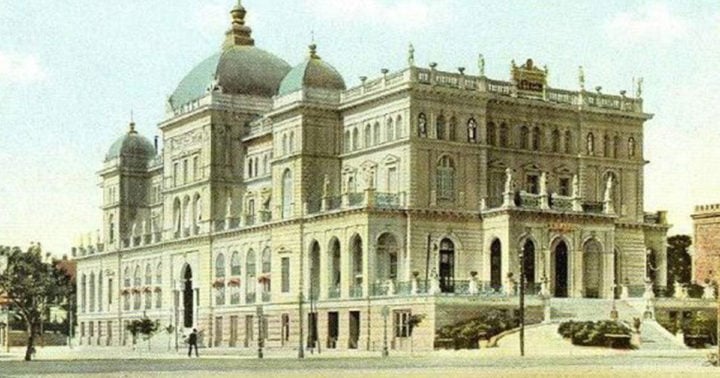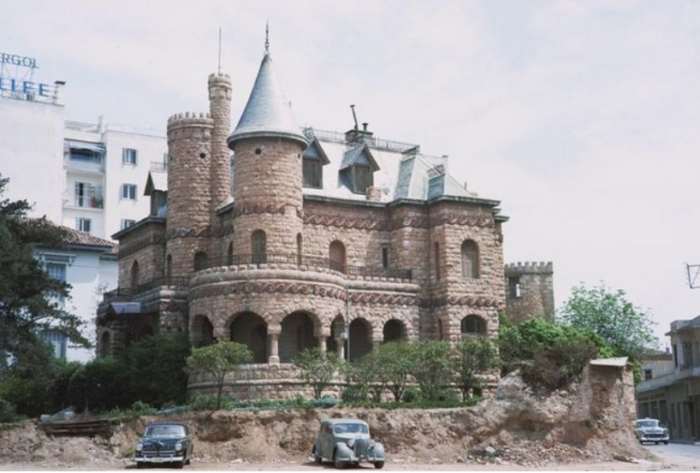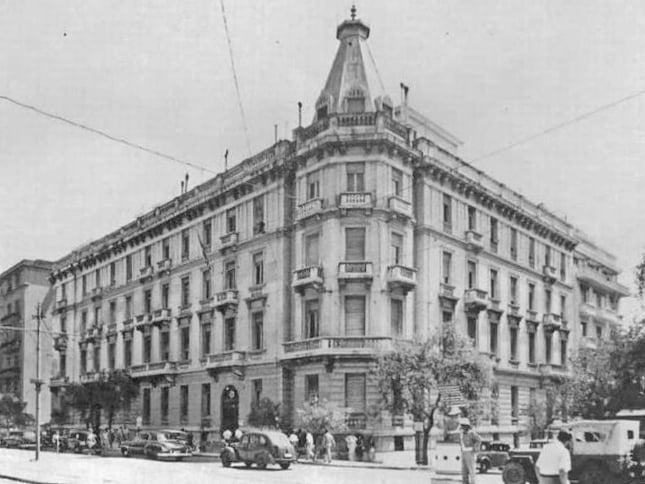
Some of Athens’s architectural landmarks were destroyed in the post-World War II years to make way for modern buildings that epitomized the rapid economic development of the country.
Athens was the youngest capital city in Europe in the nineteenth century and its urban development began basically from scratch in those years, giving it a unique style that combined impressive Neoclassicism with one of ancient Greece’s most important elements: Modesty.
The new capital was courtly and impressive, yet still humble and built to a human scale.
It had a significant architectural style all its own, including impressive public buildings all the way down to the humble houses of the poorest classes. This Athens is now almost completely gone.
The destruction of the Second World War, along with the craze of the economic boom which Greece experienced between 1950 and 1970, transformed most of Athens into a chaotic concrete jungle.
Athens’s architectural landmarks lost forever
Here is a list of some of its architectural landmarks that have now been lost:
The Actaion Hotel
This monumental hotel was built in 1903 in Athens’ southern suburb of Neo Faliro.
For decades it had not only served as a leisure destination for the Athenian elites, but also for high-profile visitors, politicians, businessmen, diplomats and many others from all over Europe.
It had 160 rooms, as well as large banquet rooms, gardens and its own private beach on the Athenian Riviera.
Unfortunately, its downgrade began a few years before the outbreak of WWII. Tragically, it was also bombed during the War, but somehow its skeleton remained intact for years.
Instead of restoring it, the local authorities in Piraeus decided to demolish the Actaion during the postwar years. Today, a private hospital stands in its place.
The Megaron Negreponte

This humble yet beautiful piece of architecture stood in Athens’ Syntagma Square from 1880 until 1956.
It was a modest yet beautifully-detailed residential building that hosted some of the most prominent members of Greek society’s elite.
The Negraponte was part of a series of luxurious homes which created the urban background of the traditional stroll the Athenians would take every day as they walked toward the Royal Gardens (today’s National Garden of Athens).
The Negreponte Megaron, along with so many other beautiful residences, was demolished in 1956. A tasteless, concrete apartment tower block now stands in its place.
The Villa Margarita

Built as the private residence of an Armenian businessman, the Villa Margarita was an architectural landmark in the very heart of Athens.
Constructed in the early twentieth century, it more closely resembled central European castles than an ordinary home.
Made of stone and with architectural details which made it completely unique, this building was truly a gem in the heart of early twentieth-century Athens.
The Villa’s gardens were acquired and then destroyed by the state because it desired to broaden the nearby streets and turn them into avenues.

The fairy-tale-like building was demolished in the 1970s. A plain, boxy rectangular tower block of offices soon rose up in its place.
The Municipal Theater of Athens

Opened in 1888 and designed by Ernst Ziller, the “Architectural Father” of modern Athens, the Municipal Theater was an ornament on today’s Kotzia Square, close to Athens’ City Hall.
However, folk legend has it that the building began its life under bad omens.
Andreas Syngros, the man who paid for its construction, demanded the creation of a number of shops along its sides, in order to make money by renting or selling them.
This detracted from the Theater’s beauty, much to the disappointment of the Athenians, who had expected something more impressive on the inside.
Additionally, the fact that King George of Greece fell asleep during the theatre’s opening in 1888, even annoying other audience members with his snoring, spread the rumor that something was wrong with this building.
In 1901, the Royal (now National) Theater of Greece was established, and Athens’ Municipal Theater became more of a second-class player in Athens’ cultural life.
In 1922, refugees from Asia Minor were hosted on its property, and unintentionally, this use caused widespread damage to the building, which by that time had stopped serving as a theater completely.
Adding to its string of misfortunes, the Theater also annoyed Constantinos Kotzias, the mayor of Athens at that time, whose office overlooked the theater’s backside. For this reason, he simply decided to demolish it in 1940.
In an ironic twist of fate, the square where this architectural masterpiece was located is now named after the mayor who destroyed it.
The Tsopotos House

One of the most unique and distinctive private houses in all of downtown Athens once distinguished the intersection of Piraeus Street and Menandrou Street.
The unknown architect who designed it had copied the Lysicrates Monument in Plaka, offering a beautiful, ancient yet modern twist to this edifice in the heart of the city’s landscape.
The elegant home survived for exactly 100 years.
Its construction was completed in 1870 and its demolition took place in 1970.
In its place, another characterless high-rise building of the 1970s stands high, reminding passersby of Athens’ dramatic, and tragic, urban renewal efforts of the last few decades.
The Pesmazoglou Megaron

Built in 1900 and designed by Ernst Ziller for businessman Ioannis Pesmatzoglou, this block of luxurious apartments hosted numerous foreign nationals who desired to live in an apartment in downtown Athens.
For a reason which remains unknown, the building was simply cut in half in the 1960s.
The half which had an elegant corner tower was demolished and a terraced block of offices was built in its place.
Today, the “Half Megaron” still sits there, attached awkwardly to the office block, an eternal reminder of the architectural madness that this city went through in the decades after the war.
Athens still has a treasure of neoclassical buildings dotting the city
The complete list of individual buildings which were destroyed in Athens to give space to featureless, soulless concrete tower blocks can cover entire pages.
However, what matters more than reminiscing about the past is acknowledging that Athens is an example of a city that ruined its beauty on its own, and by choice, since it chose easy profits over aesthetics.
Still, Athens has a vast treasure of neoclassical buildings dotting the city. Some are world-renowned such as the Academy, the National Library, the Zappeion, and the Parliament.
Most, however, go unnoticed. Scattered throughout the Greek capital among modern multistory buildings, the aesthetically ugly polykatoikies are Greek apartment buildings, some of which are vandalized with walls covered with graffiti. Some of these apartment buildings are occupied by squatters or simply left to their fate.
Born in classical Greece, exported to Europe, and reintroduced in the modern Greek state in its infancy, Athenian neoclassicism provided the Greek capital city with a unique style that made it stand out.
See all the latest news from Greece and the world at Greekreporter.com. Contact our newsroom to report an update or send your story, photos and videos. Follow GR on Google News and subscribe here to our daily email!



